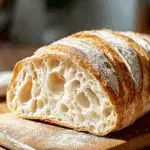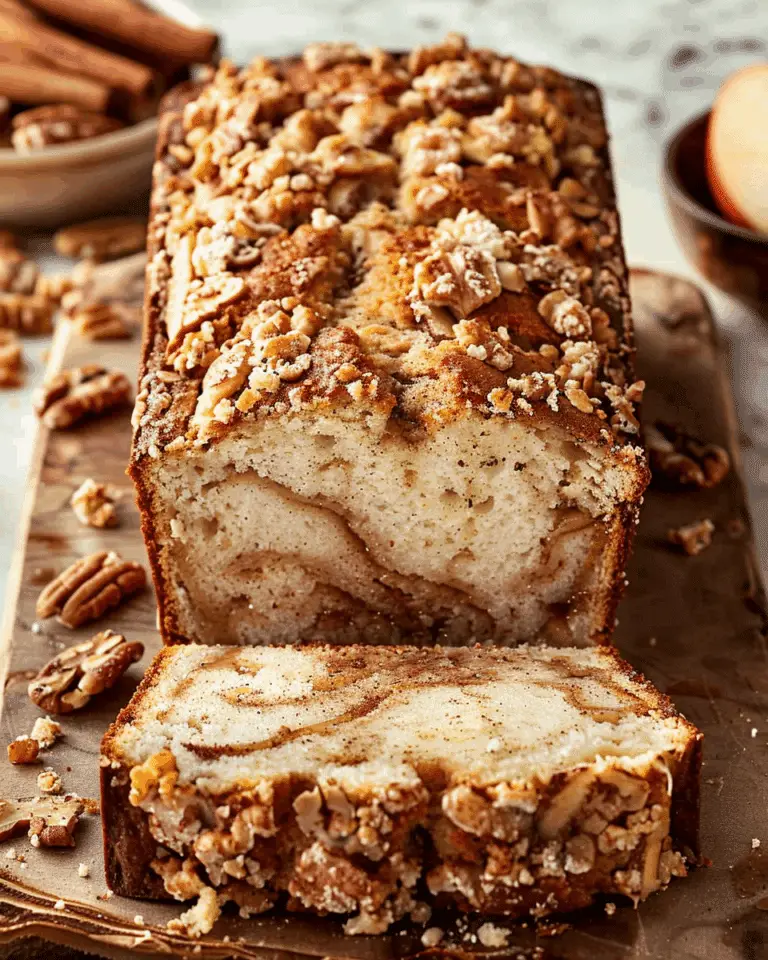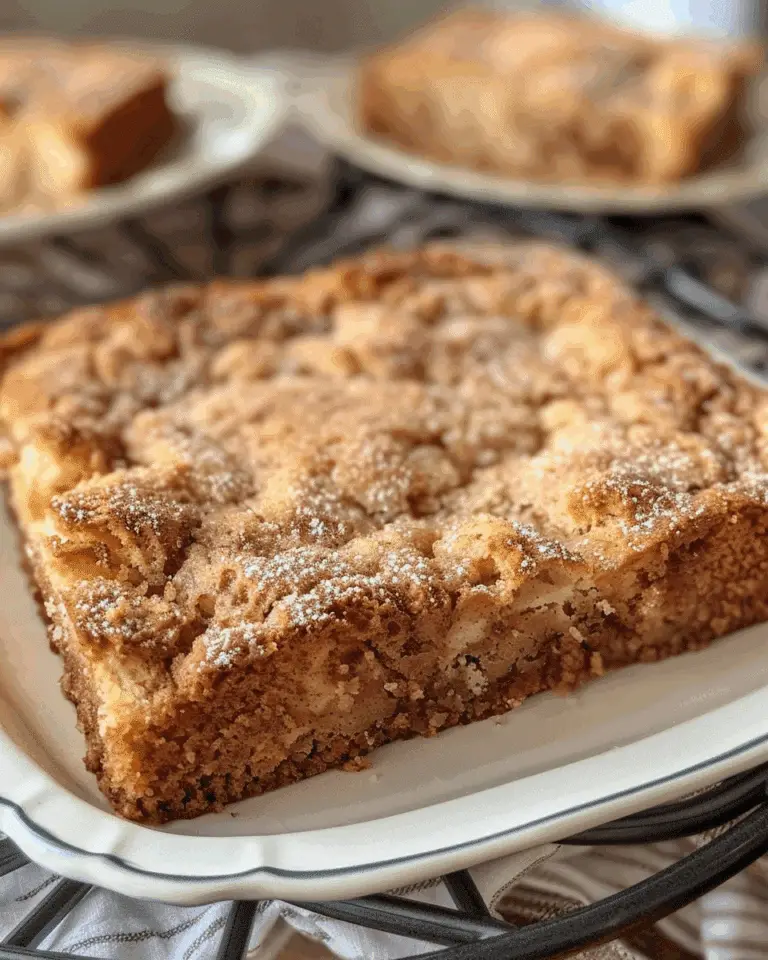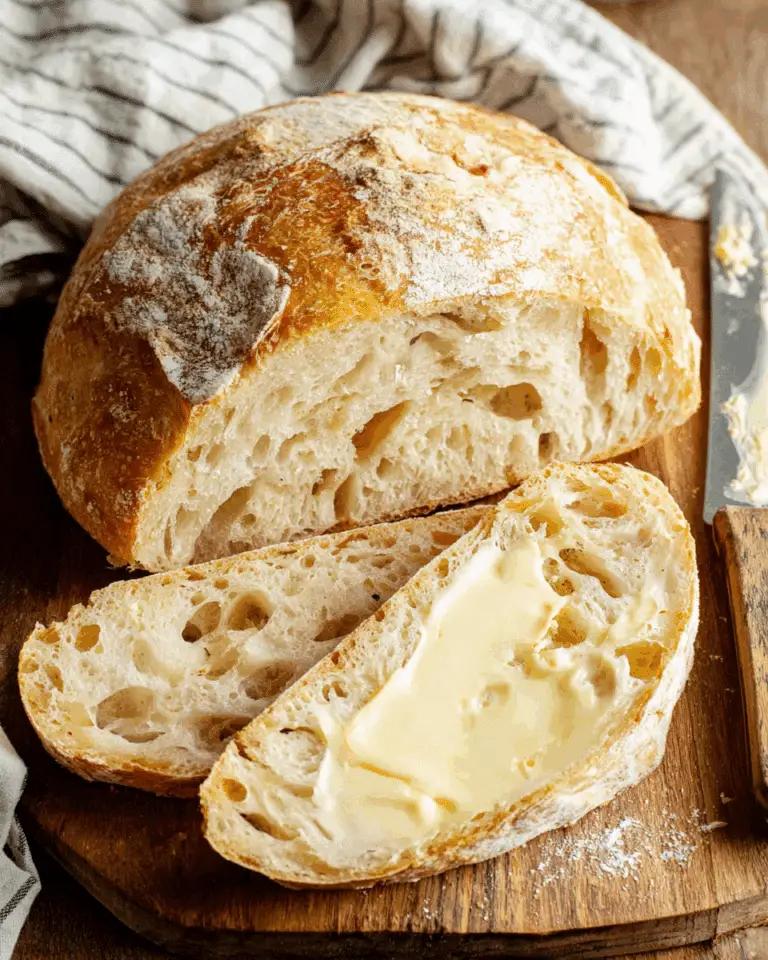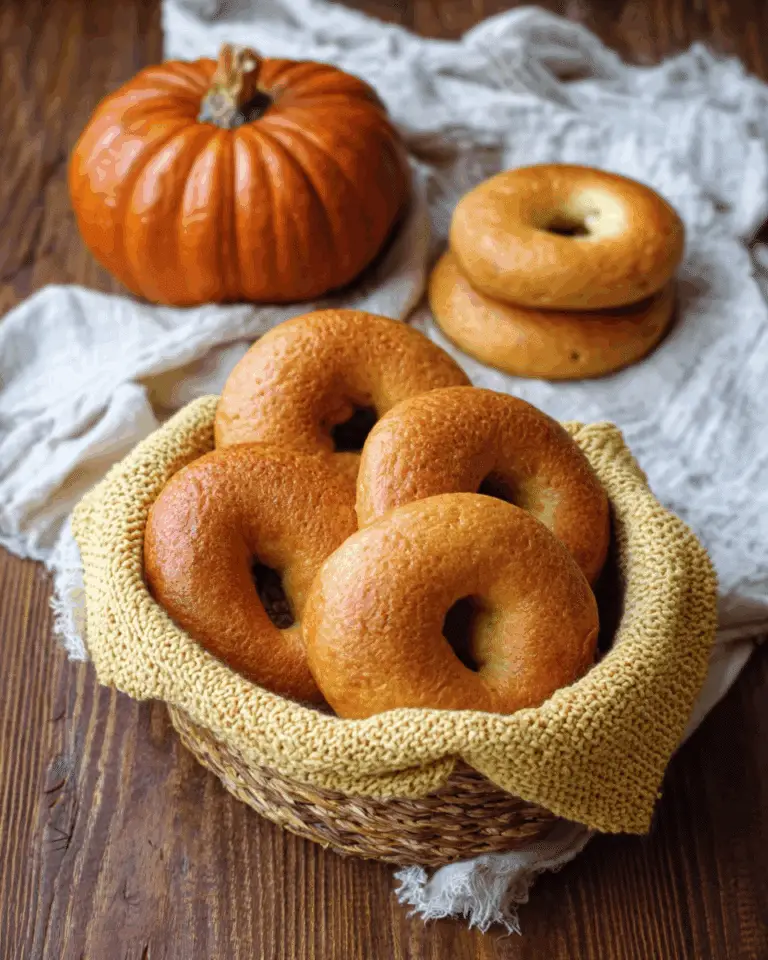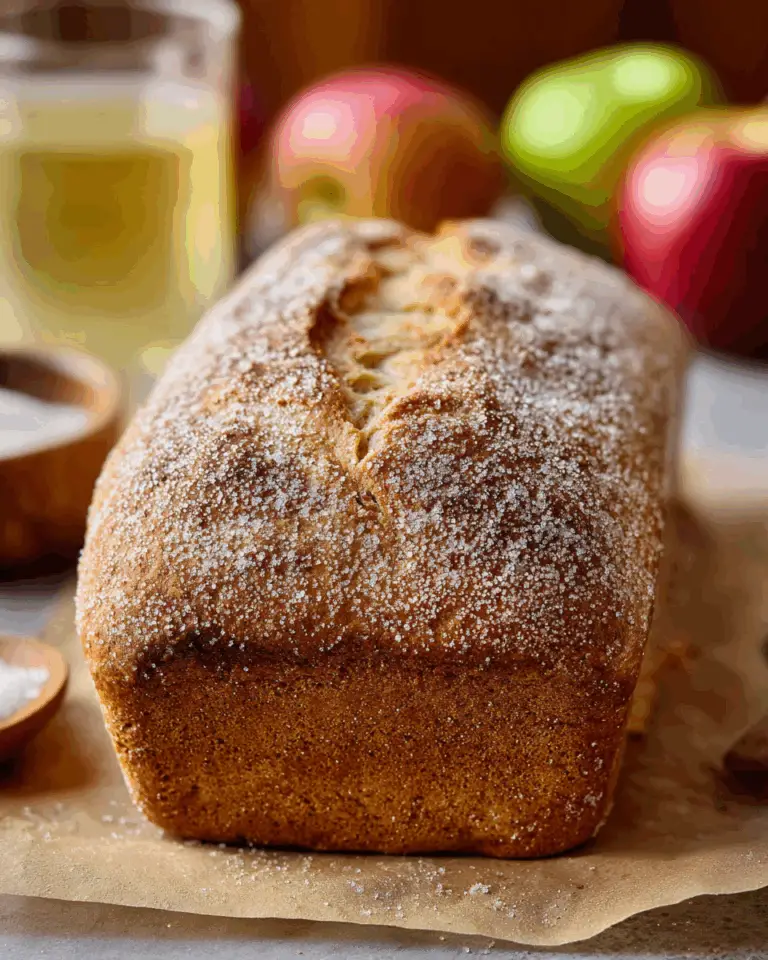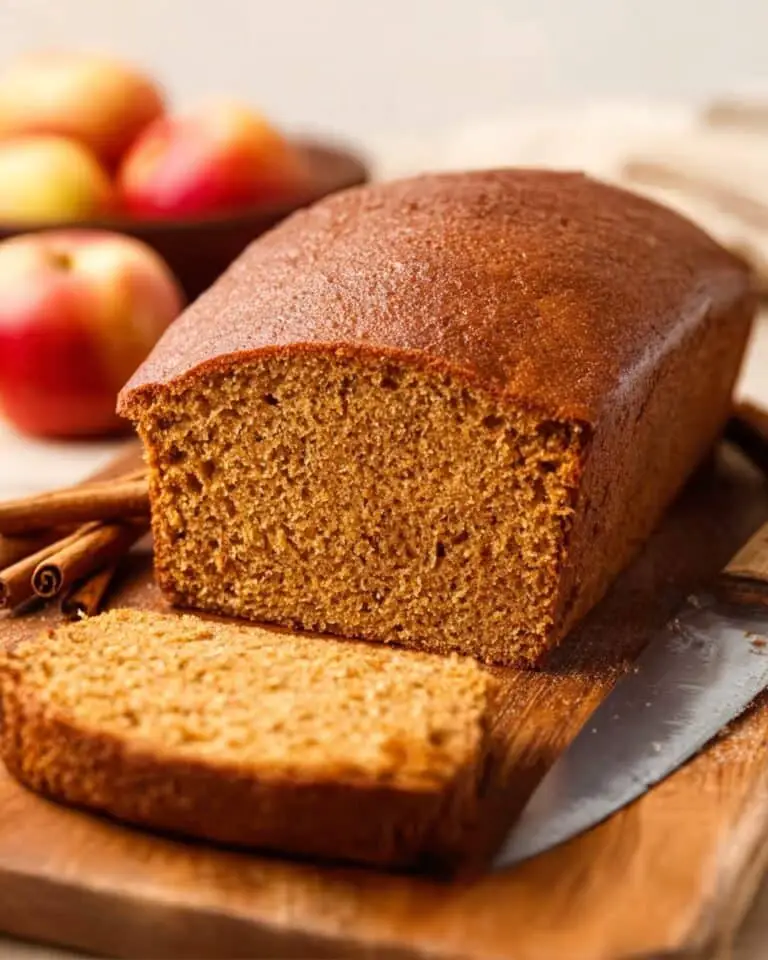Get ready to fall head over heels for freshly baked bread at its finest! The Best Ciabatta Recipe brings artisan bakery magic to your own kitchen, producing loaves with a crisp golden crust and an irresistibly chewy, airy crumb. Whether you’re dunking slices in olive oil, building next-level sandwiches, or just tearing chunks to enjoy with good company, this ciabatta is the stuff bread-lovers’ dreams are made of. The simplicity of the ingredients lets each flavor shine, delivering that unmistakable aroma and texture that makes homemade bread so rewarding.
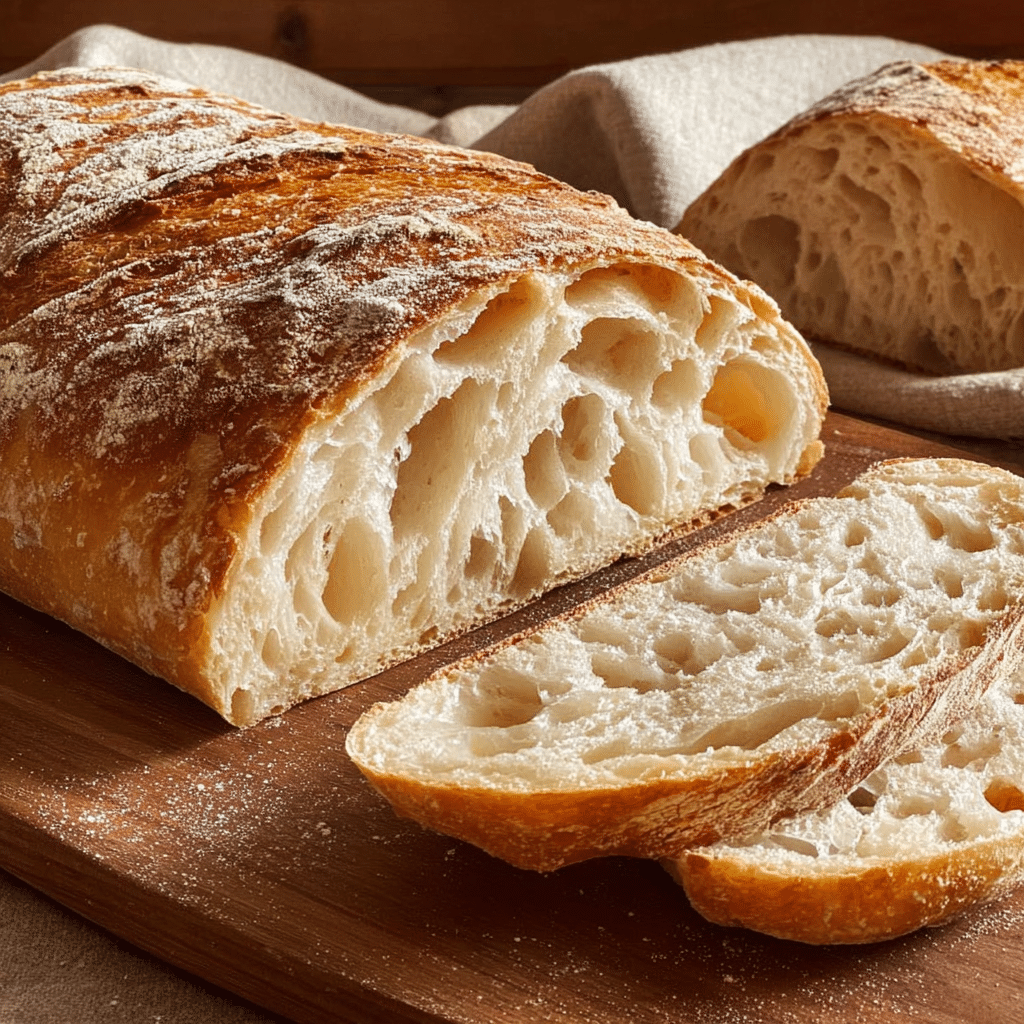
Ingredients You’ll Need
With just a few everyday ingredients, The Best Ciabatta Recipe showcases how magic can happen in your oven with a little patience and love. Each component plays a crucial role in creating that signature crust, tender interior, and mouthwatering aroma that makes this artisan bread so special.
- All-purpose flour: The classic base, providing the perfect protein content for that delicate, stretchy dough.
- Instant yeast: Helps your bread rise efficiently, giving the ciabatta its light, open crumb without an overly yeasty flavor.
- Warm water: Ensures yeast activates smoothly and lends the dough its pleasantly moist, bubbly structure.
- Salt: Essential for flavor and for strengthening the dough structure.
- Extra virgin olive oil: Provides richness, a slight peppery flavor, and that glistening, golden finish on top.
How to Make The Best Ciabatta Recipe
Step 1: Mix the Dry Ingredients
In a large mixing bowl, combine the all-purpose flour and salt. Stir them together well so the salt is evenly distributed. This is a simple but vital start, as mixing in the salt early ensures it won’t kill your yeast later and helps build in that classic flavor right from the beginning.
Step 2: Activate the Yeast
In a separate bowl, dissolve the instant yeast in the warm water. Let it sit for a minute so the yeast can start waking up—but don’t worry, instant yeast works fast and doesn’t need a long proofing. You’ll soon see tiny bubbles forming on the surface, which means your yeast is active and ready to make magic.
Step 3: Form the Dough
Slowly pour the yeast mixture into the flour mixture, mixing with a wooden spoon or your hand until a rough, shaggy dough begins to form. It’ll look sticky and a bit messy at first and that’s exactly what you want. Don’t overwork it at this stage—just make sure the flour is fully moistened.
Step 4: Knead Until Smooth
Turn your dough onto a lightly floured surface and knead for about 10 minutes. As you work, the dough transforms from sticky to smooth, elastic, and soft, with a bit of tackiness. This kneading process creates the gluten network that gives The Best Ciabatta Recipe its chewy texture and beautiful big holes.
Step 5: First Rise
Place your dough ball in a greased bowl, turning it over so all sides are lightly coated with oil. Cover the bowl with a clean kitchen towel or plastic wrap, then set it in a warm, draft-free spot for about an hour, or until the dough has doubled in size. Watching dough rise is always a bit magical—it’s where humble ingredients start their transformation!
Step 6: Shape and Second Rise
Punch down the risen dough to release excess air, then divide it into two equal pieces. Shape each into a loose oval, being gentle to keep that lovely open crumb. Transfer the ovals onto a parchment-lined baking sheet. Cover them again and let rise for another 30 to 45 minutes, until puffed and slightly wobbly.
Step 7: Bake to Perfection
While the loaves have their final rise, preheat your oven to 425°F (220°C). When ready to bake, drizzle the loaves with extra virgin olive oil and sprinkle the top with some flaky sea salt. Bake for 20 to 25 minutes, until the ciabatta is beautifully golden and sounds hollow when tapped. The aroma alone will have everyone circling the kitchen.
How to Serve The Best Ciabatta Recipe
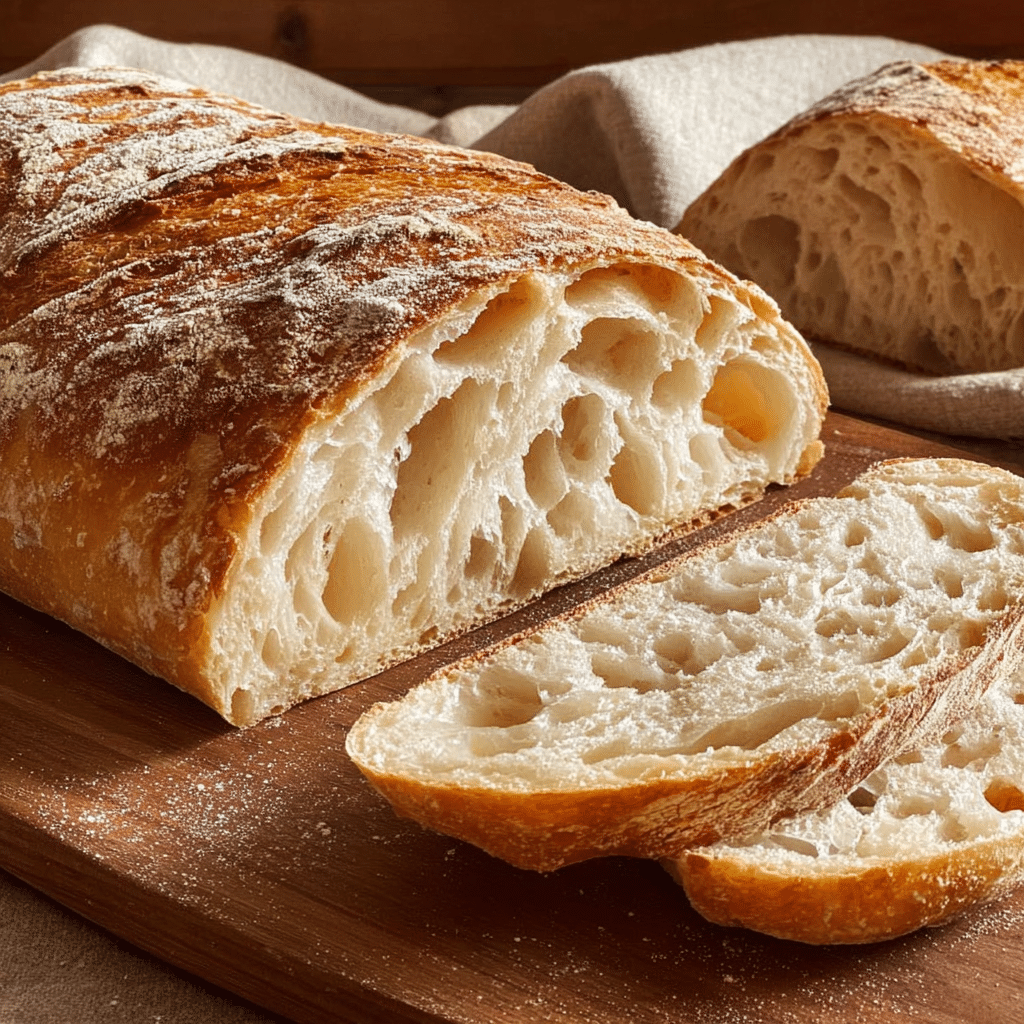
Garnishes
Just before serving, brush the tops with a little extra olive oil and a sprinkle of flaky salt for shine and flavor. Fresh herbs like rosemary, thyme, or even a scattering of roasted garlic add a gourmet touch. The bread’s airy crumb is a perfect canvas for creative finishing touches.
Side Dishes
Pair The Best Ciabatta Recipe with classic Italian soups like minestrone or tomato basil, a platter of antipasto, or alongside a fresh caprese salad. You can even use slices as the base for bruschetta or panini, instantly elevating your lunch or dinner.
Creative Ways to Present
For a show-stopping table centerpiece, tear or slice the warm bread and present it in a rustic basket with flavored olive oils or spreads. Small loaves also make adorable individual servings for dinner parties. Try serving with a selection of dips—think olive tapenade or whipped ricotta—to let The Best Ciabatta Recipe truly shine.
Make Ahead and Storage
Storing Leftovers
Wrap leftover ciabatta tightly in foil or plastic wrap and store at room temperature for up to two days. For best results, avoid the refrigerator, as it can dry out the bread and diminish that signature soft crumb.
Freezing
If you’d like to extend the life of your bread, ciabatta freezes beautifully. Simply wrap loaves tightly in plastic and place them in a freezer-safe zip-top bag. Freeze for up to two months—just thaw at room temperature before serving.
Reheating
To refresh day-old or thawed bread, place it in a preheated 350°F (175°C) oven for about 8 to 10 minutes. The crust crisps up again and that just-baked aroma fills your kitchen as if The Best Ciabatta Recipe just emerged from the oven.
FAQs
Can I use bread flour instead of all-purpose flour?
Absolutely! If you use bread flour, you’ll get a slightly chewier texture and possibly even bigger air pockets in the crumb. Just keep an eye on your hydration and adjust with a tablespoon more water if needed.
Why is my ciabatta dough so sticky?
The high hydration is what gives The Best Ciabatta Recipe its signature open, airy crumb. A sticky dough can be a little tricky to handle, but a well-floured surface (and hands) makes shaping much easier—try not to add too much extra flour.
Do I need a mixer for this recipe?
No mixer is required! This dough comes together with just a bowl and a spoon, and a bit of hands-on kneading. If you do have a stand mixer, you can use the dough hook to make things even easier, but it’s not essential.
Can I make this dough ahead of time?
Yes! After the first rise, you can punch down the dough and refrigerate it overnight. Let it warm up for about 30 minutes before shaping and continuing with the second rise, then bake as usual. This can even deepen the flavor.
What’s the best way to store baked ciabatta overnight?
Once cooled, store your ciabatta wrapped in a clean kitchen towel and then sealed in a paper bag or foil. This helps retain some moisture while keeping the crust crisp.
Final Thoughts
Bread-making really does have its own special kind of alchemy, and The Best Ciabatta Recipe is proof that artisan results are absolutely achievable at home. If you’ve never tried baking ciabatta before, this approachable recipe is the perfect place to start—soon you’ll find yourself making it again and again. Try it out, share it with friends and family, and enjoy every golden, chewy bite!
PrintThe Best Ciabatta Recipe
Learn how to make the best homemade ciabatta with this simple and delicious recipe. This rustic Italian bread is perfect for sandwiches, dipping in olive oil, or enjoying on its own.
- Prep Time: 20 minutes
- Cook Time: 25 minutes
- Total Time: 2 hours
- Yield: 2 loaves
- Category: Bread
- Method: Baking
- Cuisine: Italian
- Diet: Vegetarian
Ingredients
Dough:
- 4 cups all-purpose flour (500g)
- 1 ½ tsp instant yeast (5g)
- 1 ¾ cups warm water (410ml)
- 2 tsp salt (10g)
Finishing:
- 3 tbsp extra virgin olive oil (45ml)
- Sea salt, for sprinkling
Instructions
- Prepare Dough: In a large mixing bowl, combine flour and salt. In another bowl, dissolve yeast in warm water.
- Knead: Gradually mix the yeast mixture into the flour until a shaggy dough forms. Knead on a floured surface for about 10 minutes until smooth.
- Rise: Place dough in a greased bowl, cover, and let rise for about an hour or until doubled.
- Shape and Proof: Punch down the dough, divide it into two pieces, and shape each into an oval loaf. Let loaves rise on a parchment-lined baking sheet for another 30-45 minutes.
- Bake: Preheat oven to 425°F (220°C), drizzle loaves with olive oil, sprinkle with sea salt, then bake for 20-25 minutes until golden brown.
Notes
- You can customize the toppings by adding herbs, olives, or sun-dried tomatoes before baking.
- For a chewier crust, place a pan of water in the oven while baking.
Nutrition
- Serving Size: 1 slice
- Calories: 160
- Sugar: 0.5g
- Sodium: 290mg
- Fat: 3g
- Saturated Fat: 0.5g
- Unsaturated Fat: 2g
- Trans Fat: 0g
- Carbohydrates: 29g
- Fiber: 1g
- Protein: 4g
- Cholesterol: 0mg

